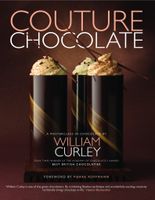Wild cacao was originally consumed as long ago as 1500bc by the Olmecs. It is thought that they were the first humans to make it into a drink by crushing cocoa beans and cooking them with water and spices, such as chillies.
The Olmecs were the first to develop successful methods of cultivating, followed over time by the Aztecs and the Mayans. Soon, the cocoa bean became a powerful commodity in Meso-America, used as a monetary unit and as part of religious rituals.
In 1502 Christopher Columbus was given a bag of cocoa beans when he landed on the Island of Guanaja, but he did not appreciate its potential value. Then, in 1519, Hernán Cortés arrived on the coast of present-day Mexico and embarked on his famous conquest of the Aztec empire. The true importance of this brown gold was not recognized until Cortés drank it with the Aztec emperor Montezuma, and the invading Spanish then used local produce (such as sugar cane, vanilla, cinnamon and pepper) to adapt it to their tastes. On his return home, Cortés was in disgrace for not finding real gold and so it was not until 1544 that chocolate was officially brought to Spain by a visiting party of Mayan dignitaries.



